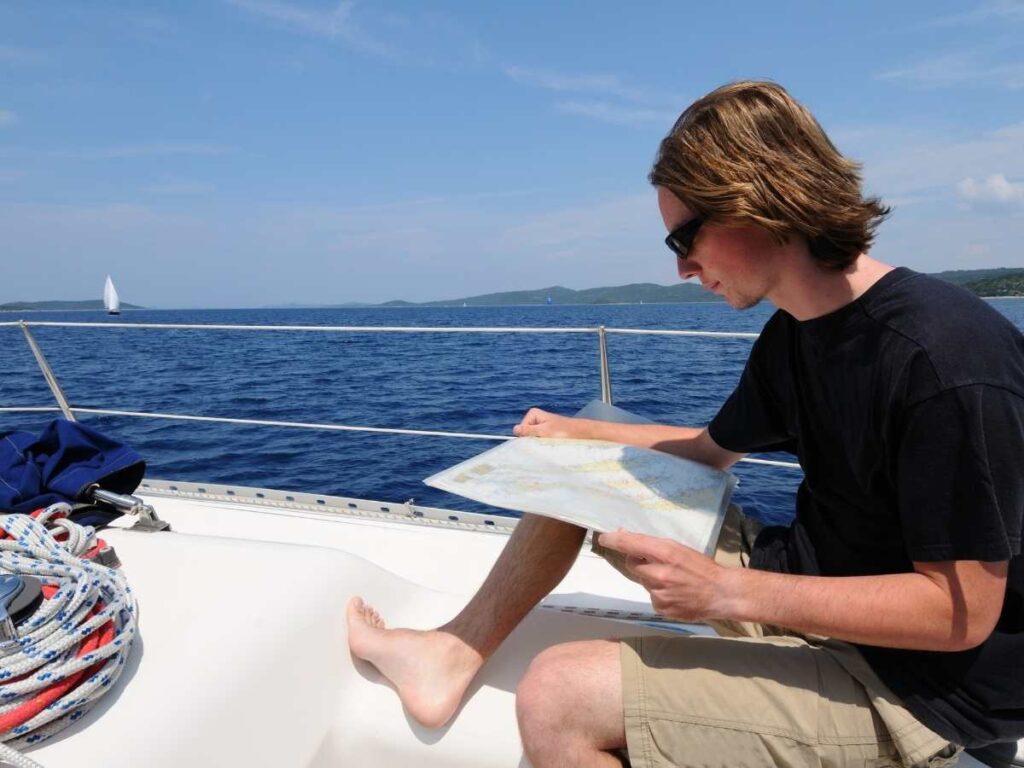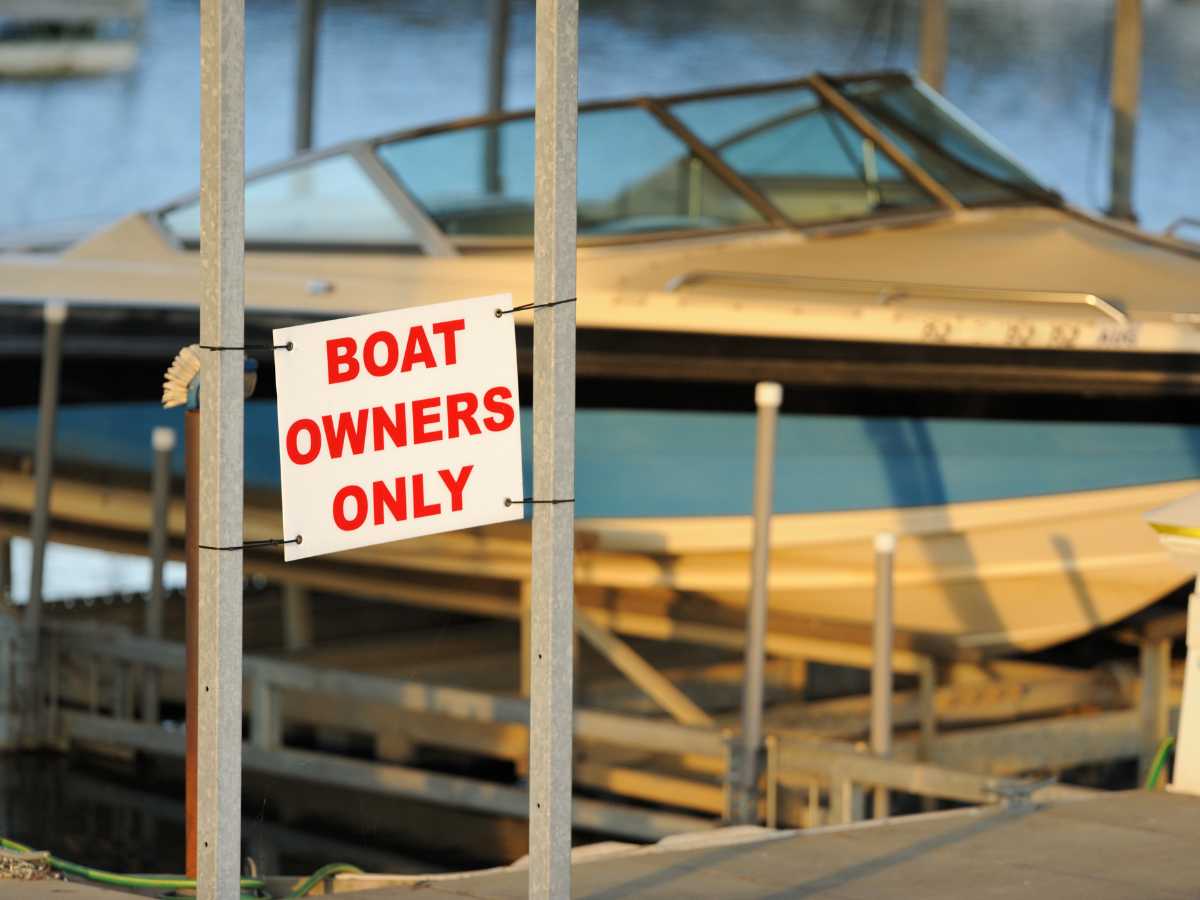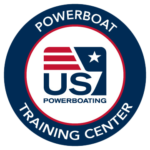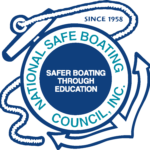Owning a boat is a thrilling adventure but comes with responsibilities. Proper new boat owner training isn’t just a recommendation; it’s essential for ensuring your safety, the safety of others, and the protection of your valuable investment.
Whether navigating through busy marinas or cruising on open waters, understanding the fundamentals of boating is crucial.
This post will give you the knowledge and skills to become a responsible and confident boat owner.
Get ready to navigate your boating journey with confidence and ease.

Understanding Your New Boat
Owning a boat opens up a world of adventure on the water, but it’s crucial to understand your vessel inside and out before setting sail.
Familiarizing yourself with the anatomy of a boat and the different types available will enhance your appreciation for your newfound possession and contribute to a safer and more enjoyable boating experience.
Let’s delve into the essential aspects of understanding your boat.
Boat Anatomy
When it comes to the anatomy of a boat, knowing the key components is fundamental for every new boat owner. Here are some essential parts to familiarize yourself with:
- Hull: The hull is the main body of the boat, serving as the core structure that keeps the vessel afloat.
- Deck: The deck is the top surface of the boat, providing space for passengers to move around and enjoy the views.
- Bow: The front of the boat is referred to as the bow, which is the direction the ship moves towards.
- Stern: Opposite the bow, the stern is the back of the boat where the engine is often located.
- Engine: The engine powers the boat, propelling it through the water. Understanding how the engine operates is crucial for controlling the vessel effectively.
Types of Boats
Boats come in various shapes and sizes, each designed for specific purposes and activities.
Here are the main types of boats to consider:
- Sailboats: Sailboats rely on wind power to move and are ideal for those who enjoy a more traditional and peaceful sailing experience.
- Powerboats: Powerboats are equipped with engines for propulsion and offer speed and agility on the water. For more detailed information on powerboats, check out Discover Boating.
- Yachts: Yachts are luxurious vessels designed for leisure and comfort, often equipped with amenities for extended stays on the water. You can find out more about yachts on Boats.com.
By understanding the differences between sailboats, powerboats, and yachts, new boat owners can decide on the type of boat that best suits their needs and preferences.
Whether you prefer the tranquility of sailing or the thrill of powerboating, choosing the right boat type is the first step towards an exciting boating journey.

New Boat Owner Training Safety Measures
Boating is a rewarding experience that offers endless opportunities for adventure on the water.
However, safety should always be the top priority for every boat owner.
You can ensure a secure and enjoyable boating journey by following essential safety practices and preparing for emergencies.
Let’s delve into the critical aspects of safety that every new boat owner should prioritize.
Boating Rules and Regulations
Understanding and adhering to boating rules and regulations is crucial for safe and responsible boating. Local laws, navigation rules, and safety guidelines are in place to protect both boaters and the marine environment.
Familiarize yourself with the regulations of your boating location to avoid potential hazards and legal consequences.
For detailed information on boating regulations, visit the official website of the U.S. Coast Guard.
Some essential rules and regulations to consider include:
- Speed Limits: Pay attention to posted speed limits in different waterways to avoid accidents and collisions.
- Right of Way: Understand who has the right of way in various boating scenarios to prevent conflicts with other vessels.
- Alcohol Consumption: Boating under the influence is illegal and dangerous. Ensure that anyone operating the boat is sober.
- Environmental Protection: Follow waste disposal and fuel usage guidelines to protect the marine ecosystem.
By consistently following these rules, you can contribute to a safer boating environment for everyone.

Emergency Preparedness
Being prepared for emergencies is essential to mitigate risks and ensure the safety of everyone on board.
Here are some critical aspects of emergency preparedness that every new boat owner should prioritize:
- Life Jackets: Always have an adequate number of properly fitted life jackets for every passenger. Ensure everyone wears a life jacket while on the water, as it can be the difference between life and death in an emergency.
- Distress Signals: Familiarize yourself with distress signals and signaling devices required for boating emergencies. Flares, whistles, and emergency beacons are vital tools for attracting attention and signaling for help when in distress.
- Fire Prevention: Implement fire safety measures by having fire extinguishers onboard and knowing how to operate them effectively. Regularly inspect the boat for potential fire hazards and educate passengers on fire prevention protocols.
- First Aid Kits: Keep a well-stocked kit onboard to address minor injuries and medical emergencies promptly. Ensure that everyone onboard knows where the kit is and how to use its contents.
Every new boat owner must prioritize boating safety by following rules and regulations and being prepared for emergencies.
By fostering a safety-first mindset, you can enjoy your boating adventures with confidence and peace of mind, knowing that you are well-prepared for any situation that may arise on the water.

Basic Navigation Skills for New Boat Owners
Navigating the waters confidently requires mastering basic navigation skills, which are fundamental for safe and efficient boating.
Understanding how to read nautical charts, interpret vital information, and grasp the impact of tides and currents on your boating journey are essential components of becoming a proficient boat owner.
Let’s dive into the critical aspects of basic navigation skills that every new boat owner should cultivate.

Reading Nautical Charts
Navigating the waterways begins with deciphering nautical charts, which serve as the roadmap for safe boating excursions.
Nautical charts are:
- Detailed maps of bodies of water.
- Indicating water depths.
- Submerged hazards.
- Buoy locations.
- Other crucial information for sailors.
With the prevalence of GPS navigation systems, many people may not be familiar with reading charts.
However, in the event of electrical failure or GPS malfunction, having the ability to read nautical charts becomes a crucial backup navigational skill.
Symbols on nautical charts represent various features such as buoys, lighthouses, underwater obstructions, and navigational aids. Understanding these symbols is vital for plotting courses, avoiding dangers, and ensuring a smooth voyage.
When examining a nautical chart, focus on depth contours, which indicate the underwater topography and aid in route planning. Identifying landmarks, such as prominent structures or geographical features, can serve as visual references for navigation.
By effectively utilizing nautical charts, boat owners can navigate with precision and confidence, enhancing the safety of their voyages.
For more information on reading nautical charts, visit In-Command Seamanship Training, a partner of BoatUS.
Understanding Tides and Currents as a New Boat Owner
The dynamic forces of tides and currents play a significant role in determining the flow and direction of water, influencing boating conditions and navigation strategies.
Tides, the rise and fall of sea levels caused by gravitational forces, affect water depth and current speeds. Understanding tidal patterns and their impact on navigation is crucial for planning departures and arrivals and navigating through shallow areas.
Currents, the continuous flow of water in a particular direction, can assist or challenge boaters depending on their direction and strength.
Awareness of current patterns and their interaction with tides is essential for optimizing your route and conserving fuel.
Planning your boating trips by the tide and current predictions can enhance safety, efficiency, and overall boating experience. To learn more about tides and currents, visit NOAA.
Mastering basic navigation skills, including reading nautical charts and understanding tides and currents, empowers boat owners to navigate confidently and responsibly.
By honing these skills, new boat owners can embark on boating adventures with knowledge and skill, ensuring safe and enjoyable journeys on the water.

New Boat Owner Training Maintenance and Care
Proper maintenance and care are essential for responsible boat ownership to ensure your vessel remains in top condition for safe and enjoyable voyages on the water.
By implementing regular cleaning routines and addressing common mechanical issues promptly, you can prolong the lifespan of your boat and enhance its performance.
Let’s explore the critical maintenance components and care every new boat owner should prioritize.
Cleaning and Upkeep for New Boat Owner Training
Regular cleaning of your boat is crucial for aesthetic purposes and plays a significant role in preventing corrosion and maintaining the integrity of various components.
Here are some tips to keep your boat in pristine condition:
- Hull Maintenance: Regularly inspect and clean the hull to remove barnacles, algae, and other debris affecting the boat’s speed and fuel efficiency. Consider using environmentally friendly hull cleaners to preserve marine life.
- Engine Care: Perform routine checks on the engine, including changing the oil, inspecting the propeller, and ensuring proper ventilation. Proper engine maintenance is vital for optimal performance and preventing breakdowns.
- Winterizing: Before storing your boat for the winter season, winterize it properly to protect the engine, plumbing systems, and electrical components from freezing temperatures. Consult your boat’s manual or a professional for detailed winterization instructions.
Troubleshooting Common Issues
Boating enthusiasts may encounter various mechanical issues while out on the water. Being prepared to troubleshoot common problems can prevent disruptions to your boating experience.
Here are some common issues to watch out for and how to address them effectively:
- Engine Overheating: If your engine overheats, immediately reduce speed and check for clogged water intake or cooling system malfunctions. Shut off the engine and allow it to cool before attempting any repairs.
- Electrical Failures: Electrical failures can lead to maritime issues and safety concerns. Inspect the battery connections, fuses, and wiring for any signs of damage or corrosion. Carry spare fuses and essential tools for quick repairs.
- Leaks: Water leaks can compromise the integrity of your boat’s structure and lead to potential flooding. Identify the source of the leak by inspecting hull seams, fittings, and through-hull connections. Seal any leaks promptly using marine-grade sealants.
By staying proactive in cleaning and maintaining your boat and developing troubleshooting skills for common issues, you can ensure that your vessel is always in prime condition for boating adventures.
Prioritizing maintenance and care will not only enhance the longevity of your boat but also contribute to a safer and more enjoyable boating experience.
For more insights on boat maintenance and care, visit BoatUS, which offers comprehensive guides and resources on keeping your boat in shape.

New Boat Owner Training With Joy
Embarking on a boating adventure is about navigating the waters and embracing the joy and freedom of being out on the open sea.
As a new boat owner, there are various ways to enhance your boating experience and make the most of your time on the water.
Let’s explore some essential aspects to help you fully enjoy your boating journey.
Boating Etiquette for New Boat Owners
Boating etiquette is fundamental to being a responsible boater and ensuring harmonious interactions on the water.
Respecting other boaters, wildlife, and the environment is key to fostering a safe and enjoyable boating community.
Here are some essential etiquette guidelines to keep in mind:
- Respecting Other Boaters: Maintain a safe distance from other boats to prevent collisions and disturbances. Follow right-of-way rules and communicate clearly with other boaters to avoid misunderstandings.
- Respecting Wildlife: Preserve the natural habitat by observing wildlife from a respectful distance and avoiding any actions that may disturb or harm marine animals. Be mindful of nesting areas and protected species.
- Respecting the Environment: Minimize your environmental impact by properly disposing trash, avoiding fuel spills, and following designated boating areas. Contribute to clean waterways and pristine shorelines for future generations to enjoy.
By adhering to boating etiquette practices, you promote a positive boating culture and contribute to preserving marine ecosystems and wildlife habitats.
Recreational Activities
Exploring recreational activities while boating adds excitement and diversity to your on-water experiences. Whether you enjoy fishing, engaging in water sports, anchoring in serene coves, or planning thrilling trips to new destinations, there’s a wide range of recreational opportunities.
Let’s delve into some popular recreational activities for boaters:
- Fishing: Fishing enthusiasts can cast lines to pursue various fish species for sport or relaxation. Discover prime fishing spots, learn about different fishing techniques, and savor the thrill of reeling in your catch.
- Water Sports: Dive into the exhilarating world of water sports, including skiing, wakeboarding, tubing, and snorkeling. Feel the adrenaline rush as you engage in these dynamic activities and create lasting memories on the water.
- Anchoring: Find secluded anchorages in tranquil bays or secluded coves to enjoy peaceful moments surrounded by nature. Drop anchor, relax on deck, and soak in the beauty of your surroundings while embracing serenity and solitude.
- Planning Exciting Trips: Chart your course for exciting boating trips to scenic destinations, coastal towns, or vibrant marinas. Explore new waters, discover hidden gems, and immerse yourself in the culture and charm of diverse boating locales.
From the thrill of reeling in a big catch to the serenity of anchoring in a secluded cove, recreational activities elevate your boating experience and create lasting memories on the water.
Embrace the diversity of boating pursuits and tailor your adventures to suit your
preferences, making each journey a unique and rewarding experience.
For more boating activity ideas and inspiration, visit Discover Boating to explore a wide array of recreational opportunities that will enhance your boating experience to the fullest.

New Boat Owner Training with In-Command Seamanship Training
Starting your journey as a new boat owner is an exciting milestone filled with possibilities on the open water.
However, to navigate these waters confidently and safely, you must undergo comprehensive training that equips you with the necessary skills and knowledge.
In-Command Seamanship Training offers a structured and in-depth program designed to empower new boat owners with the confidence and expertise to handle their vessels proficiently.
Comprehensive Curriculum
The In-Command Seamanship Training program covers a wide range of essential topics that are crucial for new boat owners.
The curriculum is carefully crafted to comprehensively understand boating fundamentals, from basic navigation skills to advanced maneuvering techniques.
Participants will dive into various aspects, including:
- Safety Protocols: Learn about essential safety practices, emergency preparedness, and onboard protocols to ensure passengers’ safe boating experience.
- Navigation Skills: Master the art of reading nautical charts, understanding tides and currents, and plotting courses effectively to navigate waters confidently.
- Boat Handling: Gain hands-on experience in boat handling, docking procedures, anchoring techniques, and maneuvering in different conditions to enhance boating prowess.
- Communication: Understand the importance of clear communication, including essential radio operation, signaling, and effective coordination among crew members.

Experienced Instructors for New Boat Owners
One key component that sets In-Command Seamanship Training apart is the seasoned and knowledgeable instructors who lead participants through the learning process.
Our instructors are US Coast Guard licensed captains, ensuring that participants receive top-tier guidance backed by official qualifications in maritime operations.
These experts bring a wealth of practical boating experience and seamanship skills to the training sessions, offering invaluable insights and personalized instruction to every new boat owner.
Whether you’re a novice in boating or looking to enhance your existing skills, the guidance of these skilled instructors can significantly boost your confidence on the water.
Get to know our instructor here.

Hands-On Training at In-Command Seamanship Training
In-Command Seamanship Training New Boat Owner Training emphasizes hands-on learning to ensure participants grasp theoretical concepts and acquire practical skills for real-world boating scenarios.
Through on-water exercises, simulations, and interactive training sessions, new boat owners can put their knowledge into practice and build confidence in handling various boating challenges.
This experiential approach not only reinforces learning but also instills a sense of competence and readiness for any situation that may arise while at sea.
Ongoing Support and Resources for New Boat Owners
Beyond the New Boat Owner Training sessions, In-Command Seamanship Training offers ongoing support and valuable resources to assist new boat owners in their boating journey.
Participants gain access to a network of fellow boaters, online forums, and additional educational materials to continue expanding their seamanship skills.
The program strives to create a community of informed and well-prepared boat owners who can share knowledge, experiences, and best practices in a collaborative environment.
Enrolling in the New Boat Owner Training with In-Command Seamanship Training allows new boat owners to embark on boating adventures with confidence, competence, and a strong foundation of seamanship knowledge.
Whether you’re setting sail for the first time or seeking to enhance your boating skills, this training program equips you with the tools and expertise needed to navigate the waters safely and enjoyably.
Prepare to take control of your boating experience and sail with confidence under the expert guidance of In-Command Seamanship Training.
For more information on the New Boat Owner Training with In-Command Seamanship Training and how to enroll in the program, visit In-Command Seamanship Training today to begin your journey toward becoming a skilled and confident boat owner.






